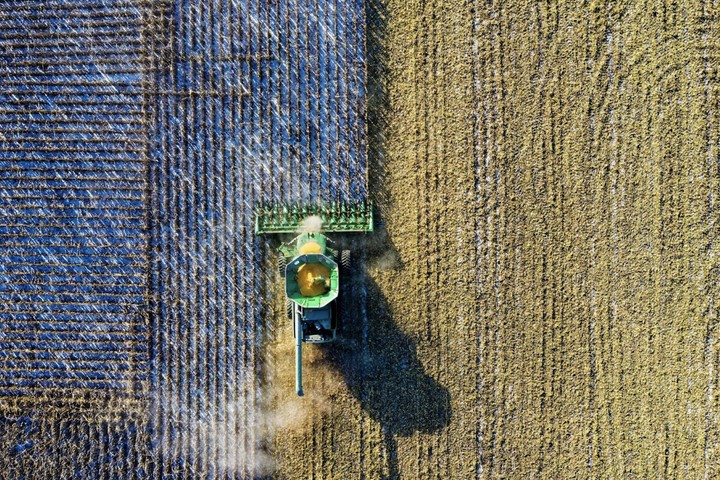
Agriculture is the world's largest industry. Today more than one third of the planet’s land is dedicated to food production. Not surprisingly then, the deforestation for agricultural land as well as livestock and soil management have amounted to the food industry being responsible for almost a quarter of greenhouse gas emissions globally. Ultimately, how food is being produced and the way food waste and by-products are being handled is not only not sustainable, but it’s destroying our planet. We’ve reached a pivotal point where it is essential that we figure out how to do more with less and find new ways to manage food production in order to promote human health and protect natural habitats. This is especially urgent since the global population is expected to reach 9.7 billion by 2050.
Given the Circular Economy (CE) is driven by awareness of concern about issues of waste and resource depletion, it’s no wonder it's the leading solution adopted across sectors. However, redesigning the world’s largest industry is no small feat. It’s going to take immense creative problem solving as well as open innovation and crowdsourcing if we’re going to bring about change in one of the oldest types of business industries. Before submitting your circular economy ideas in agriculture to the ARSX2022 Challenge, let’s first see how other companies in different but equally large industries are applying the CE model and consider what questions we should ask about the agricultural industry.
1. Demolition Industry - Unbuilders
The demolition industry generates millions of tonnes of waste annually. This is because up until recently, their system involved a simple two step process: smashing and disposing material. Though it’s fast and easy, it unfortunately produces a lot of waste. Luckily there’s Unbuilders who use skilled carpenters to disassemble homes layer-by-layer. They then upcycle the material back into the supply chain and sell it to other companies to make furniture, etc. They currently have an impressive salvage and recycle rate on a single-family home (99%) and divert nearly 4 million tons of waste annually.
Unbuilders developed a model that essentially eliminates waste from their process. What processes can be developed to reduce or eliminate pollution and waste from agricultural production and consumption? What about integrating traditional waste from food production back into the ecosystem or developing a useful co-product with it?
2. Fashion Industry - Aday
Newsflash: fashion pollutes the planet. Much of this has resulted from the rise in fast fashion, which focuses on rapid production and high volumes. Gone are the days when we had four seasons of clothing. Now we have a new season each week meaning people tire of their clothes faster, leading to excessive textile waste. Aday is a clothing company on a mission to develop long-lasting, low impact fabrics with sustainable, versatile pieces. They shy away from replacing wardrobes frequently and instead create pieces that can be worn in different ways for different activities across different seasons. 77% of their fabrics are recycled, and all of their pieces are “cold wash” which saves over 2,000 pounds of CO2 per year vs hot wash. Their commitment to innovative, long-lasting, and durable designs are making slow fashion the ‘it’ trend.
Aday focuses on using readily accessible recycled fabrics instead of sourcing virgin fibers from elsewhere because they are durable. When it comes to agriculture, let's imagine that access to virgin resources in agriculture isn’t an option. What technologies can we utilize to regenerate natural systems?
Ultimately, reducing waste and increasing efficiency in agriculture will help to support the circular model. If you have an idea that will help the economy shift to a circular agriculture system, review the challenge guidelines and help create value for the future.








